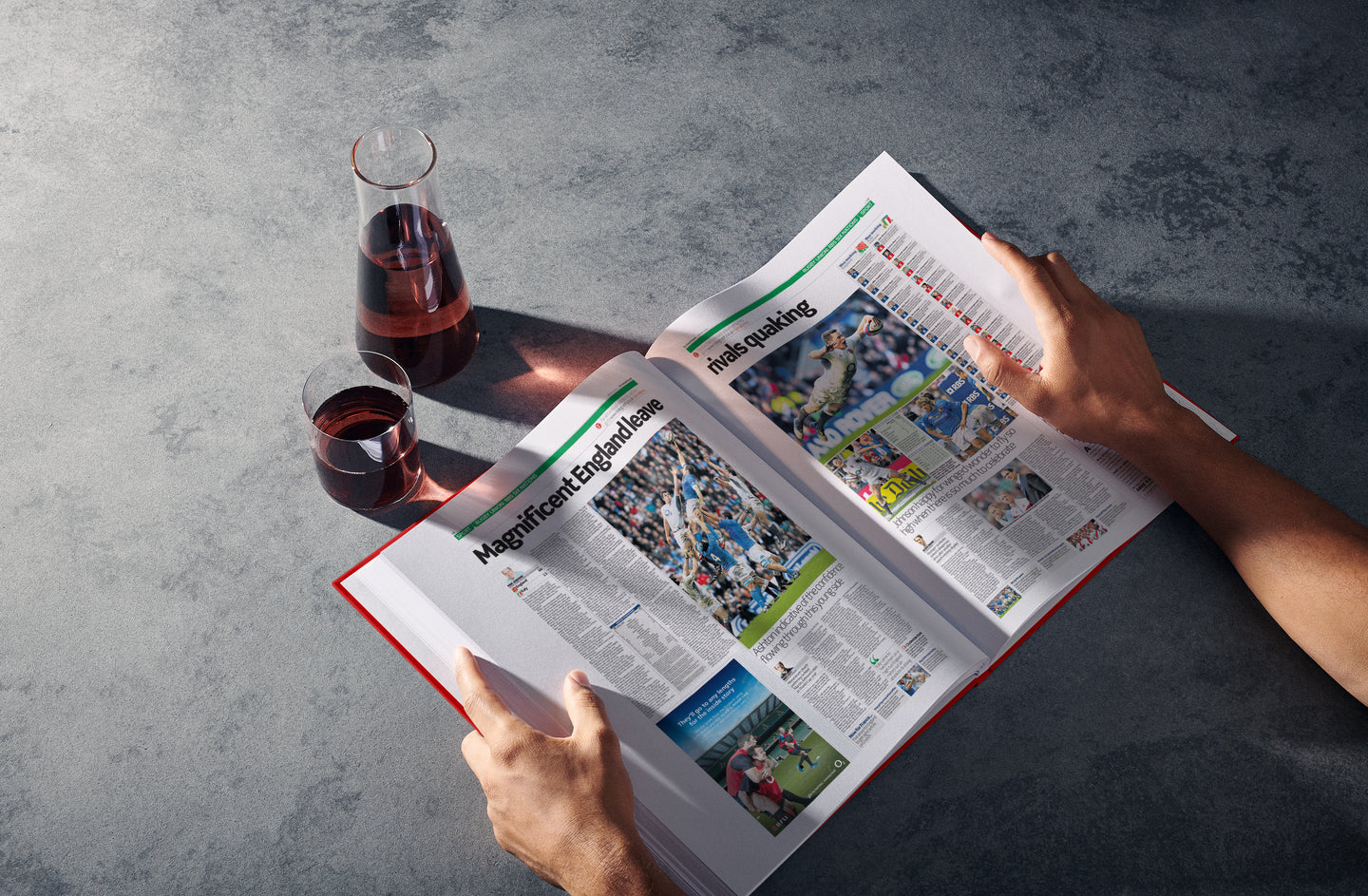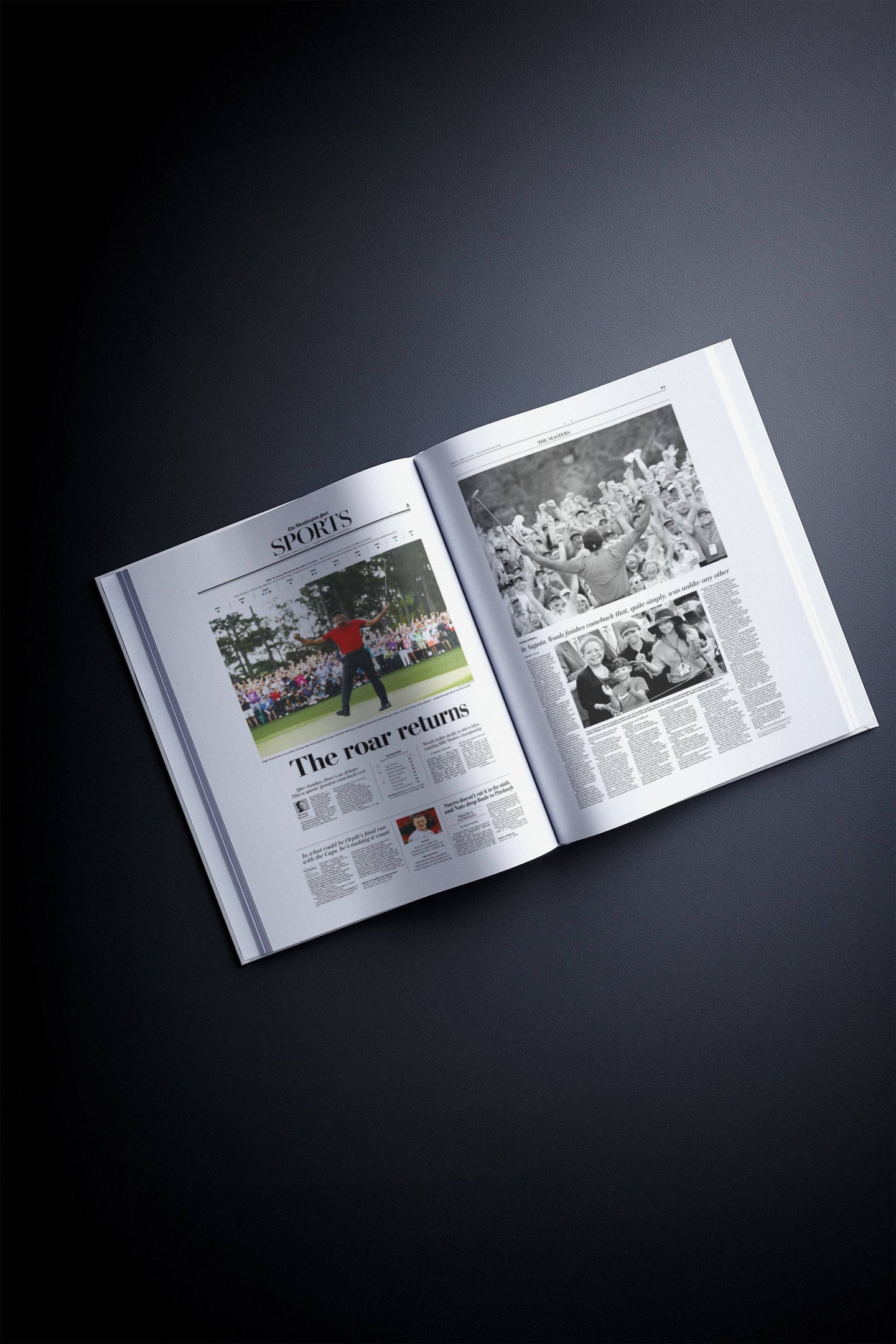The Chicago Tribune is a daily newspaper printed in Chicago, Illinois. The newspaper is the most-read newspaper in the Chicago metropolitan area, as well as the Great Lakes Region. As of 2017 figures, the newspaper even had the 6th highest American newspaper circulation, and it remains the dominant voice of the Midwest. Here we look at the illustrious Chicago Tribune history, from its founding to the present day.
Turn the page to:
- Early History and Joseph Medill
- Chicago Tribune in the 20th Century
- The Treaty of Versailles Text
- Major League Baseball All-Star Game, 1933
- Presidential Election Gaffe of 1948
- Chicago Tribune and Watergate
- Current Ownership
- Pulitzer Prizes
- The Chicago Sunday Tribune
- Political Stance
- Chicago Tribune Circulation Figures
Early History and Joseph Medill
Founded in 1847 by James Kelly, Joseph K.C. Forrest and John E. Wheeler, the first edition of the Chicago Tribune was published on June 10 of the same year. As the newspaper found its feet, there were many changes in editorship and ownership as the next eight years commenced.
In 1855, the newspaper was getting close to bankruptcy, so Joseph Medill and another five partners decided to buy it. Medill was able to transform the Chicago Tribune into a profitable publication, and used the newspaper to promote his abolitionist and Free Soil beliefs. It was also Medill who established the newspaper as one of the most influential early supporters of Abraham Lincoln for US President.
The Chicago Tribune gained in status when it reported on the American Civil War. It often called for reforms in government when the war came to an end, and Medill was later elected Mayor of Chicago. In 1874, Medill bought a controlling ownership interest in the newspaper and continued to be its publisher until he passed away in 1899. Our Chicago Tribune archives let you discover original copies of the newspaper from as far back as 1900, revealing what the newspaper was like during this time.

The Chicago Tribune front page
Chicago Tribune in the 20th Century
The grandson of Joseph Medill, Robert R. McCormick, became the leader of the newspaper in the early 20th century, sharing the duties of publisher and editor in chief with Joseph Medill Patterson, his cousin, between 1914 and 1925. McCormick became the main leader of the newspaper when Patterson became the publisher and editor in chief of the New York Daily News.
Under the leadership of McCormick, the newspaper became strongly isolationist, and was extremely biased in its reporting of social trends and political news. The newspaper even called itself “The American Paper for Americans,” focusing very heavily on nationalist themes and Americanism. It greatly resented the Democrats and the New Deal of the 1930s, and was scornful about the French and British. On the other hand, it was very enthusiastic for Chinese military and political leader Chiang Kai-shek and Senator Joseph McCarthy.
As well as the presidential election mistake discussed later, 1948 was also a memorable year for the newspaper since its innovation had extended to TV broadcasting. WDAP radio station was bought by the Chicago Tribune back in 1924 and changed its name to WGN (AM), with WGN standing for “World’s Greatest Newspaper” – the newspaper’s self-description. WGN Television was then established in 1948, remaining Tribune property to the present day and are some of the oldest newspaper and broadcasting cross-ownerships in the United States.
McCormick passed away in 1955, leading the newspaper to take a few editorial risks. Despite this, it established itself through its in-depth coverage of Chicago and Midwestern commerce. The Chicago Tribune reported on government and politics, as well as industry, commerce, agriculture and social life.
Harold Grumhaus became publisher and Clayton Kirkpatrick became editor in 1969, changing the nature of the newspaper’s outlook. The Chicago Tribune offered a more diverse and broader perspective after the conservatism of the early 20th century.
The Treaty of Versailles Text
The Chicago Tribune managed to obtain the text of the Treaty of Versailles in 1919, creating one of the best scoops in the newspaper’s history. It was the Tribune who presented the US Senate with the original copy of the Treaty, standing the newspaper apart from other publications at the time.
Major League Baseball All-Star Game, 1933
The newspaper’s highly regarded sports editor, Arch Ward, established the Major League Baseball All-Star Game in 1933, which formed part of Chicago’s Century of Progress exposition. Taking place during the most difficult years of the Great Depression, the aim of the game was to improve the reputation of the sport and promote it. While it was originally deemed the “Game of the Century,” the All-Star game became a permanent baseball fixture of the season.

The Chicago Tribune Building in Chicago, Illinois
Image: Wikimedia Commons
Presidential Election Gaffe of 1948
When reporting on the 1948 presidential election, the Chicago Tribune became well-known for a mistake it made. Early returns led many editors across the country to believe that Thomas Dewey, the Republican candidate, would win the election.
Next day’s Chicago Tribune issue printed the headline “Dewey Defeats Truman,” which in turn allowed the paper to become a collector’s item. Underneath the article, there was an incorrect article written by Arthur Sears Henning, which described the West Coast results before the East Coast election returns were made available. In a famous picture taken later on, actual winner Harry Truman is seen holding the newspaper at St. Louis Union Station.
Chicago Tribune and Watergate
Reaching a great journalistic achievement, the Chicago Tribune printed the complete 246,000 word text of the Watergate tapes on May 1, 1974. The text was published in a 44-page supplement which was released 24 hours after the transcripts were released by the Nixon White House.
The newspaper was the first to publish the transcripts and even beat the US Government Printing Office’s published version of the tapes. For this alone, the newspaper made headlines. A week after the transcript’s publication, the newspaper called for the resignation of Richard Nixon, claiming that he could not continue to be president after the tapes had been examined.
This call for his resignation by the Chicago Tribune made the news since it was evident the type of conservatism exerted by the newspaper had changed. The White House responded to the editorial written by the newspaper, claiming that a loyal supporter had been lost and their call for his resignation was a blow to Nixon’s hopes of suppressing the events of the scandal.
Current Ownership
In terms of who owns the Chicago Tribune newspaper, Tribune Publishing has been running the newspaper since the founding of the newspaper. The company operated as a division of the Tribune Company, a multimedia conglomerate based in Chicago, until 2014 when it was spun off into a separate public company.
Tribune Publishing also publishes the New York Daily News, The Baltimore Sun, the Hartford Courant, Sun-Sentinel of South Florida, and the Orlando Sentinel. Behind Gannett and The McClatchy Company, it is the third-biggest newspaper publisher in the United States.

The Chicago Tribune front page
Pulitzer Prizes
In total, the Chicago Tribune has won 27 Pulitzer Prizes. For years, Colonel McCormick stopped the newspaper from taking part in the competition, but since then the publication has reached remarkable achievements.
The first prize was won in 1961 for Carey Orr’s editorial cartooning, and George Bliss, a reporter, won a prize the following year for his reporting. Here is a list of all the Pulitzer Prizes won by the Chicago Tribune.
- 1932: Editorial Cartooning
- 1936: Correspondence
- 1961: Editorial Cartooning
- 1962: Reporting
- 1971: Reporting
- 1973: Reporting
- 1975: International Reporting
- 1976: Local Investigative Specialized Reporting
- 1979: Distinguished Criticism
- 1983: Editorial Cartooning
- 1985: Editorial Cartooning
- 1986: Editorial Writing
- 1987: Explanatory Journalism
- 1988: Investigative Reporting
- 1989: Commentary and Editorial Writing
- 1994: Editorial Writing and Explanatory Journalism
- 1998: Explanatory Reporting
- 1999: Criticism
- 2001: Explanatory Reporting and International Reporting
- 2003: Editorial Writing
- 2005: Feature Reporting
- 2008: Investigative Reporting
- 2012: Commentary
- 2017: Feature Photography
The Chicago Sunday Tribune
The Chicago Sunday Tribune is the sister paper of the Chicago Tribune, printing on Sundays. The Sunday edition includes a variety of different sections, as well as the news, sports, and financial sections that are printed in the daily newspaper. These include: a Metropolitan section largely covering news in the community, a Woman’s section, Society and Travel, Drama and Movies, as well as a Picture section.

The Chicago Sunday Tribune front page
Political Stance
In terms of the Chicago Tribune’s political leanings, the newspaper didn’t initially have a political affiliation when it was founded. However, it often showed support for the Whig or Free Soil parties as opposed to the Democrats. By 1853, Roman Catholics and foreign citizens were frequently criticized in xenophobic editorials, and the newspaper also became a strong supporter of temperance.
In 1855, the Chicago Tribune formally decided to affiliate with the nativist American or Know Nothing party. The party’s candidate, Levi Boone, was then elected as Mayor of Chicago in March.
For most of the 19th century, the newspaper’s outlook was politically liberal. However, when Robert McCormick, Joseph Medill’s grandson, became the leader of the newspaper in the 20th century, the publication became more and more conservative. McCormick was well-known for his nationalist-isolationist views, which was made clear in his opposition to Franklin D. Roosevelt’s presidency between 1933-1945 and, in 1950, his disapproval of the candidacy of Dwight D. Eisenhower, who was a moderate republican candidate.
When Harold Grumhaus became publisher and Clayton Kirkpatrick became editor in 1969, the newspaper started publishing from a more broad perspective with wider commentary. It retained its conservative and Republican alignment, but more diverse opinions began to be represented, changing the reporting style of the newspaper.
Chicago Tribune Circulation Figures
| Date | Circulation |
| 2007 | 566,827 |
| 2013 | 414,930 |
| 2014 | 439,731 |
| 2017 | 438,020 |
| 2019 | 238,103 |
Between the years of 2017 and 2019, the Chicago Tribune was hit the hardest in terms of circulation decrease out of the United States’ leading newspapers. The biggest decline in Chicago Tribune history took place between these two years, with decline in earlier years a lot more steady. The newspaper follows a national trend in print circulation decline, which was made up for by digital subscriptions and online reading.


























Follow us